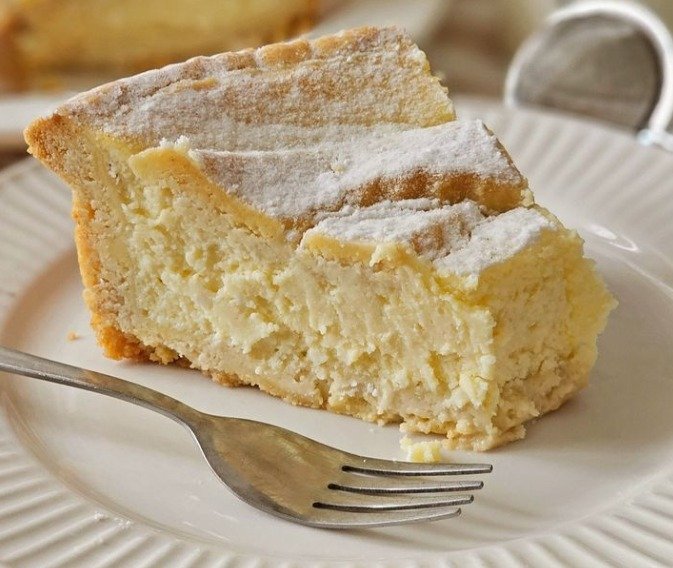Rizskoch (pronounced rees-koach) is a classic, simple, and beloved Hungarian dessert. It’s essentially a baked rice cake or pudding that is incredibly comforting, not too sweet, and often enjoyed with a dusting of cinnamon sugar or a fruit compote.
Here’s a comprehensive guide to understanding and making it.
What is Rizskoch?
Rizskoch is a traditional Hungarian dessert made from cooked rice, eggs, milk, and sugar, baked until set. Its texture is a delightful cross between a firm rice pudding and a sliceable cake. It’s typically served cold or at room temperature, cut into squares or slices.
Key Characteristics:
-
Texture: Dense, creamy, and slightly chewy from the rice, with a golden-brown top.
-
Flavor: Mild, comforting, and not overly sweet. It acts as a perfect canvas for stronger flavors like vanilla, citrus zest, cinnamon, or fruit.
-
Serving Style: Almost always served with a accompaniment to add moisture and sweetness, such as a fruit sauce, vanilla sauce, or simply cinnamon sugar.
Classic Hungarian Rizskoch Recipe
This is a standard, no-fuss recipe that yields a deliciously creamy and satisfying result.
Ingredients:
-
1 cup uncooked short-grain or medium-grain white rice (like Arborio or pearl rice)
-
4 cups whole milk (divided)
-
1 pinch salt
-
2 large eggs
-
1/3 cup granulated sugar
-
1 tsp vanilla extract
-
Zest of half a lemon (traditional, but optional)
-
Butter for greasing the pan
-
Breadcrumbs or additional butter for the pan
Instructions:
-
Cook the Rice: In a medium saucepan, combine the uncooked rice, a pinch of salt, and 2 cups of the milk. Bring to a simmer over medium heat, stirring frequently to prevent sticking. Cook until the rice has absorbed most of the milk and is tender, about 15-20 minutes. The mixture will be very thick. Remove from heat and let it cool slightly.
-
Preheat Oven & Prepare Pan: Preheat your oven to 350°F (175°C). Generously grease a 8×8 inch or 9×9 inch square baking pan (or a round cake pan) with butter. Coat the greased pan with a light layer of breadcrumbs or additional butter. This will prevent sticking and help form a nice crust.
-
Temper the Eggs: In a separate bowl, whisk the eggs with the sugar until pale and slightly thickened. Whisk in the remaining 2 cups of cold milk, vanilla extract, and lemon zest.
-
Combine: Slowly pour the egg and milk mixture into the slightly cooled rice, stirring constantly to prevent the eggs from scrambling from the residual heat.
-
Bake: Pour the combined mixture into the prepared baking pan. Bake for 45-60 minutes, or until the top is golden brown and the center is set (it might still have a slight jiggle, which will firm up as it cools).
-
Cool Completely: This is crucial! Let the Rizskoch cool completely in the pan on a wire rack. Then, refrigerate it for at least a few hours, or preferably overnight. This allows it to set fully and makes it easy to slice into clean squares.
-
Serve: Cut into squares or slices. Serve cold, dusted with powdered sugar and cinnamon or topped with warm apricot jam, cherry compote, or stewed plums.
Tips & Variations:
-
Rice Choice: Short-grain rice is best as it releases more starch, creating a creamier, denser texture.
-
Don’t Skip the Cool: Rizskoch must be cooled and chilled to achieve the right sliceable texture. Serving it warm will result in a soupy consistency.
-
Raisins: A very common addition is to stir in a handful of raisins (soak them in rum or warm water first to plump them up) into the rice mixture before baking.
-
Citrus: Lemon or orange zest adds a beautiful, bright fragrance that cuts through the richness.
-
Savory Twist: For a savory version, omit the sugar and vanilla, and add grated cheese, herbs, and fried bacon bits to the mixture before baking. Serve as a side dish.
Cultural Context:
Rizskoch is a staple of Hungarian home cooking (házias). It’s a brilliant example of “waste-not, want-not” cooking, often made to use up leftover cooked rice. You’ll find it in every Hungarian cafeteria (önkiszolgáló), bakery, and grandmother’s kitchen. It’s a dessert of comfort and simplicity, not of fancy technique.
Enjoy your taste of Hungary
